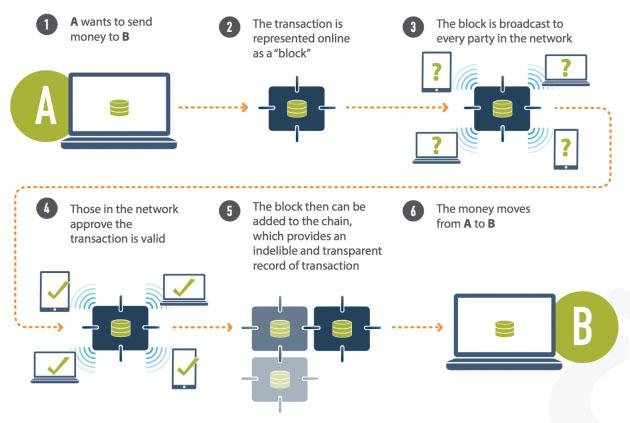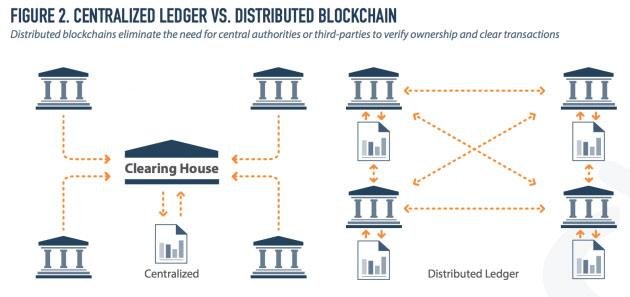
Runaway Comment: Blockchain is not just the underlying technology behind bitcoin. Its parsimony is the key to the possibility of endless change; transparency guarantees mutual trust. Improve efficiency and reduce costs. Huge investment also shows that the market is optimistic and its potential. Many companies are working hard to solve existing problems and expect to see results in three to five years.
To understand how blockchain changes business data and data business, you have to ignore those jargon.Ignore the hype.
In particular, ignore the confusion.
Basically, the blockchain is an extremely simple thing: everyone can see that no one can tamper with the logbook. Jeremiah Owyang, founder of Crowd Companies, said the simple concept is likely to change the bulk of the software licensing process and may be for commercial, financial and government purposes.

Blockchain beyond Bitcoin: How blockchain changes business in three to five years
How blockchain works (based on Oliver Wyman and Anthemis Partner, adapted by Owyang)
It is the simplicity of the possible change that has given the blockchain.
why?
"Blockchain helps build mutual trust in situations where it is usually necessary for a third party to verify the transaction and ensure both parties fulfill their legal obligations." Owyang in his new report "Blockchain Business Models: Exploring Beyond Bitcoin and Financial Services The use of blockchain "wrote. "Imagine being able to easily track your shipments through the supply chain, down to every package or even part level, or run a contract with a supplier without the need for an intermediary auditor."
Here's how blockchain works:
1, someone wants to send money, transport goods, or sign a contract
- The person sends the notification of the event to everyone in the neighborhood (range can be global)
3, if the transaction is valid, all approved
4, will be updated after approval record (here, a block will be added to the blockchain)
5, the activities carried out; if it is a payment, the money changes the owner
6, to retain the transaction can not be changed records
Most people who know little about this technology understand this. Using blockchain means that everyone has a reliable, open record of what the particular individual or company promised and what it actually does.
In other words, the blockchain ensures trust through visibility.
This includes a huge meaning.
"Create new contracts, for example: smart contracts," wrote Owyang and report co-author Jaimy Szymanski.

Blockchain beyond Bitcoin: How blockchain changes business in three to five years
Centralized ledger vs. distributed ledger (based on Oliver Wyman and Anthemis Partner, adapted by Owyang)
"Smart contracts stored on the blockchain track parties, terms, transfers of ownership, and the movement of goods or services without the need for legal intervention." Owyang and Szymanski informed the author via email. "Ownership, other rights, and notarized documents are stored on the blockchain and can also prevent counterfeiting, fraudulent sales, and illegal purchases."
The contract is an instance, and the business process is another.
To determine when and where the parts are delivered and if the supplier is shipping on demand, manufacturers need to spend millions of dollars. "Blockchain can replace it all," Owyang said.
"Using blockchain has given companies in the supply chain transparency, understanding where and when, and who is doing what," Owyang and Szymanski told the author. "Once a supplier (or product and a shipping container via IoT sensors and chips) enters tracking data into the blockchain ledger, it can not be changed, which allows other suppliers with no inherent trust in the chain to follow the shipping and delivery , As well as development, while individual suppliers can easily perform inspections and balances in near real time, eliminating the need for an intermediary auditor, improving efficiency and reducing costs.
Another sector mentioned in the report that has the maturity of change is energy.
There is no doubt that energy is in the initial stages of a shift from a centralized to a distributed production. As more and more individuals and organizations begin to make use of solar, wind and geothermal energy, their energy will be sufficient to meet their own needs, and even have the potential to be sold to the grid.
Blockchain can help identify contributions while balancing them with withdrawals.
Other industries that have the conditions for blockchain penetration include: food production, government records, retail trade, healthcare, insurance and education. Estonia is already ahead of the government. Its government has implemented the use of blockchains to help its residents "prove" their marriage, birth certificates, and business contracts.
However, changes in business models, processes, etc. are not as easy as adopting new software. Owyang and Szymanski's report covers some of the roadblocks to blockchain.
The report mentions six obstacles:
Blockchain verification is slow
Laws and regulations make the speed slower
There is very little evidence on this concept
Much of the use of the blockchain has been made in public, with no public result
Industry in the IBM (set standards) has not yet appeared
To some people, the openness of the blockchain can be a problem
These are real challenges. However, there will be only 1.4 billion U.S. dollars in 2016 alone, and there will be more this year. Hundreds of startups and reputable companies are working to solve these problems.
If they are successful, they will have answers in the next three to five years.